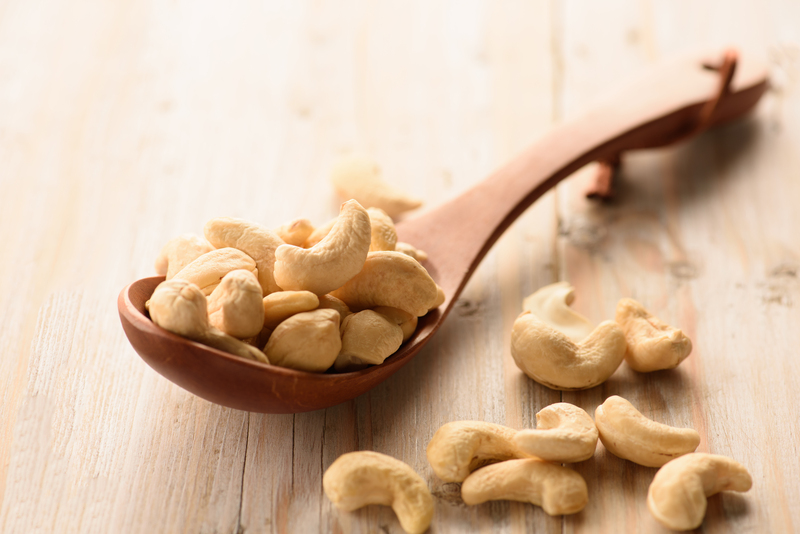Donating Versus Recycling: Options for Old Pots and Pans
When decluttering your kitchen or upgrading your cookware, you might find yourself staring at a pile of old pots and pans. What is the most responsible and sustainable way to dispose of them? This comprehensive guide explores the options of donating versus recycling old cookware, helping you make an informed, eco-friendly decision. We'll examine best practices, notable organizations, environmental impact, and tips for maximizing the value of your old kitchen items.
Understanding the Need for Responsible Cookware Disposal
Every year, millions of households replace nonstick pans, tarnished pots, and outdated cookware. Unfortunately, most of these items end up in the landfill, contributing to environmental issues like metal wastage, toxins leaching into soil, and increased greenhouse gas emissions from unnecessary manufacturing. By choosing to donate or recycle old pots and pans, you can reduce environmental impact, support local communities, and promote a circular economy.
The Environmental Impact of Discarded Cookware
- Non-Biodegradable Materials: Metal pots and pans often contain aluminum, steel, copper, or a combination. These metals do not decompose naturally and can remain in landfills for centuries.
- Toxic Coatings: Old nonstick pans may have coatings that break down over time, potentially leaching harmful chemicals into soil and groundwater.
- Resource Waste: Producing new pots and pans requires energy-intensive mining and manufacturing. Recycling minimizes this demand.

Evaluating Your Cookware: Donate or Recycle?
Before deciding how to dispose of your old pots and pans, assess their condition:
- Is the pot or pan still usable? Intact handles, flat bottoms, and non-chipped sides typically mean it's safe to donate.
- Are nonstick coatings intact? If the surface is severely scratched or peeling, it's best to recycle for safety reasons.
- Does the cookware have sentimental or historical value? Unique or vintage pieces might interest local museums or collectors who can repurpose them.
Remember: Donation is the ideal choice only for items in good, functional condition. Recycling is better for cookware that is broken, heavily scratched, rusted, or missing parts.
Donating Old Pots and Pans: Giving Cookware New Life
Why Donate?
- Supporting Those in Need: Many shelters, community kitchens, and resettlement organizations need cookware.
- Reducing Landfill Waste: Donating extends the life of each pot or pan and delays its journey to the landfill.
- Tax Benefits: Contributions to qualifying organizations may be tax-deductible.
- Building Community: Donated cookware often goes directly to families rebuilding lives after hardship.
Where to Donate Pots and Pans
If your cookware is in working order, consider these options:
-
Thrift Stores:
- Goodwill, Salvation Army, Habitat for Humanity ReStores, and local charity shops typically accept clean, useable cookware.
-
Homeless Shelters and Food Banks:
- Local shelters and food pantries may use or distribute cookware directly to families in need.
-
Churches, Synagogues, and Mosques:
- Faith organizations often run household goods drives or support refugee resettlement programs.
-
Community Centers:
- Some centers provide starter kits for people transitioning from homelessness or domestic violence situations.
-
Online Giving Networks:
- Websites like Freecycle, Craigslist (for free items), Buy Nothing Groups, and Facebook Marketplace make it easy to connect with individuals who need cookware.
Donation Tips and Best Practices
- Wash and disinfect cookware thoroughly.
- Check donation guidelines for each organization; some do not accept nonstick or scratched pans for safety reasons.
- Bundle lids, handles, or sets, if possible, for increased value to recipients.
- Attach a note describing the type of material (aluminum, stainless steel, etc.), which helps organizations sort donations.
- If donating to a specific individual, supply care instructions, especially for unique vintage or cast iron pieces.
Recycling Old Pots and Pans: Turning Waste into Resource
Why Recycle?
- Metal Conservation: Aluminum and steel are highly recyclable and can be repurposed into new products with minimal energy.
- Toxin Prevention: Recycling prevents harmful coatings and rusted metal from contaminating the environment.
- Integrating into Circular Economy: Your old cookware may become part of new home goods, automotive parts, or even another pan.
How to Recycle Old Cookware
-
Scrap Metal Yards:
- Most metal recycling centers accept pots and pans of all sizes and materials, including aluminum, copper, and stainless steel.
- Remove non-metal parts, such as plastic handles or glass lids, to facilitate processing.
-
Municipal Recycling Programs:
- Check with your city's recycling office; some curbside programs take small metal goods, while others require drop-off at a household waste facility.
-
Retail Take-Back Programs:
- Some cookware brands and retailers offer take-back or trade-in events for old pots and pans, especially when purchasing new ones.
-
Recycling Events:
- Look for local "metal recycling days" or community clean-up events where bulky metal items are accepted.
*Always confirm guidelines regarding nonstick cookware. Some facilities will not accept Teflon-coated pans due to chemical concerns, while others have specialized processes for safe disposal.*
Creative Repurposing: Third Option Beyond Donation and Recycling
Not all unwanted pots and pans need to leave your home! Creative upcycling gives new life to old cookware with a little imagination. Here are a few inspiring ideas:
- Planters: Use large pots as quirky garden planters or herb containers after drilling drainage holes.
- Bird Baths or Feeders: Suspend pans from sturdy tree limbs to attract birds or squirrels.
- Decorative Art: Paint old pans and transform them into wall hangings, clocks, or chalkboards for kitchen decor.
- Storage Solutions: Repurpose deep stockpots as under-sink organizers or utensil caddies.
Safety Note:
Always clean and sterilize cookware before repurposing if it has been used for food.
Frequently Asked Questions About Donating and Recycling Old Cookware
Can I put old pots and pans in the curbside recycling bin?
Typically, most municipal recycling programs do not accept bulky metal cookware in household recycling due to size and material sorting issues. Instead, take them to designated metal recycling centers or scrap yards. Check your local guidelines for specific instructions.
What about nonstick pans?
Nonstick pans (especially older ones with Teflon coatings) may contain chemicals considered hazardous. Many recycling centers won't accept them, but some scrap yards can process them if handles and other non-metal components are removed. For the safest disposal solution, contact local recycling offices or cookware brands that offer take-back programs designed for nonstick items.
Are donations tax-deductible?
If you donate cookware to a registered nonprofit, you may include the value as a deduction on your taxes. Always request a receipt and consult your tax advisor.
Can rusty, warped, or broken pots be donated?
It is better to recycle cookware that is broken, warped, heavily rusted, or otherwise unsafe for food preparation.
Do any cookware companies run recycling or trade-in programs?
Brands like Calphalon, TerraCycle, and some local kitchen stores occasionally run programs where you can return or trade in old cookware for recycling or store credit.

Tips for Reducing Cookware Waste in the Future
- Buy high-quality, long-lasting cookware, such as cast iron or stainless steel, that endures years of use.
- Follow the manufacturer's care guidelines to prolong life and performance.
- Avoid stacking pans with nonstick surfaces to minimize scratches and damage.
- Lend or share cookware for special occasions instead of buying single-use specialty items.
- Participate in local cookware repair workshops, if available, especially for wooden or cast iron handles.
Conclusion: Making the Best Choice for Your Old Pots and Pans
Whether you decide to donate, recycle, or creatively repurpose your old pots and pans, each of these options is far more environmentally friendly than tossing them in the trash. By donating, you extend the life and benefit to new users in your community. By recycling, you return valuable resources to the manufacturing cycle and minimize your environmental footprint. Creative upcycling adds personality to your home and reduces demand for new products.
Ultimately, the best decision depends on the condition of your cookware, available local resources, and your personal commitment to sustainability. As awareness grows, more opportunities exist to keep old cookware out of landfills and in productive use.
So before you discard your next pot or pan, consider: can you donate it, recycle it, or give it a creative new life?
Key Takeaways for Donating and Recycling Cookware
- Donation is perfect for gently used, clean, and functioning pots and pans.
- Recycling is best for broken, rusted, or non-stick damaged cookware--seek neighborhood scrap metal recyclers.
- Nonstick and specialty-coated pans require special disposal consideration.
- Local charities, shelters, and thrift stores are great options for donations; check their requirements first.
- Repurposing cookware is a fun and eco-friendly alternative when donation or recycling isn't an option.
By making conscientious decisions on how to dispose of your old pots and pans, you contribute to a healthier planet and a more compassionate community.
